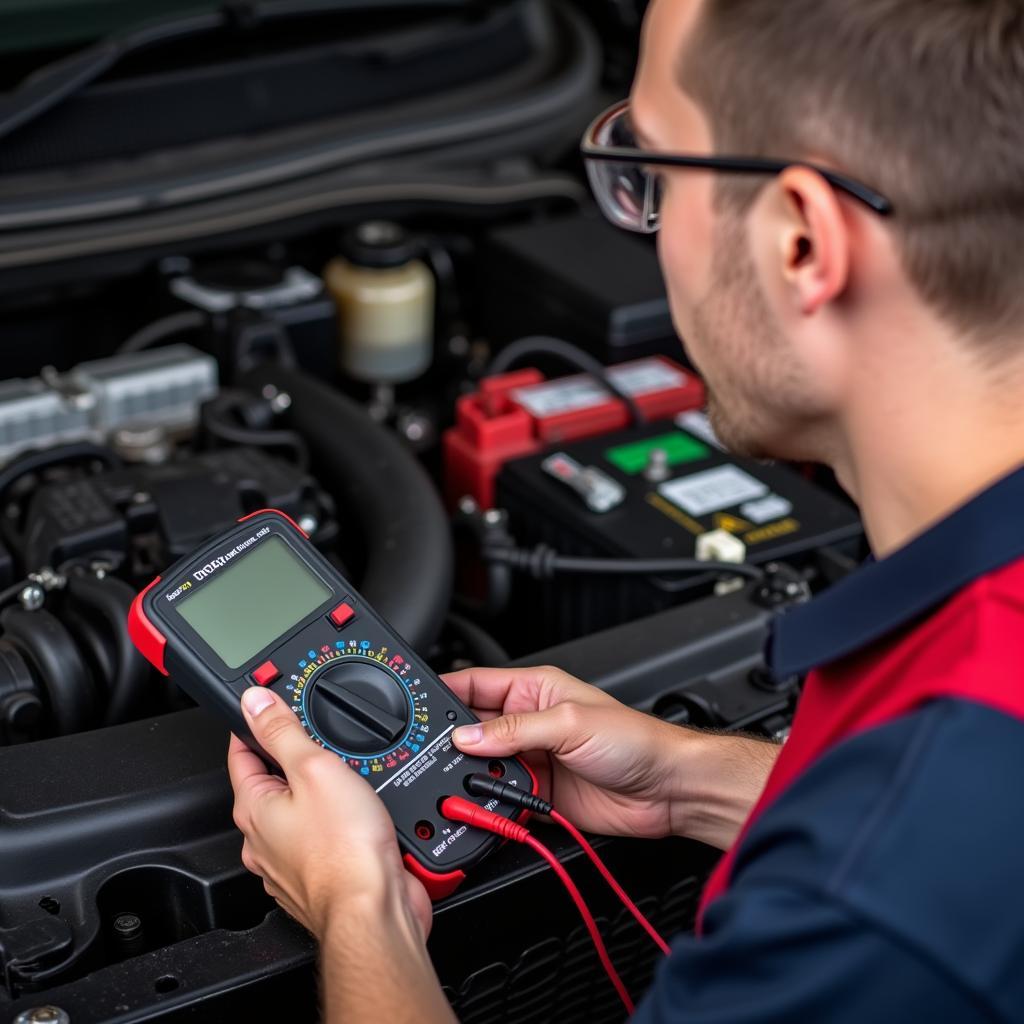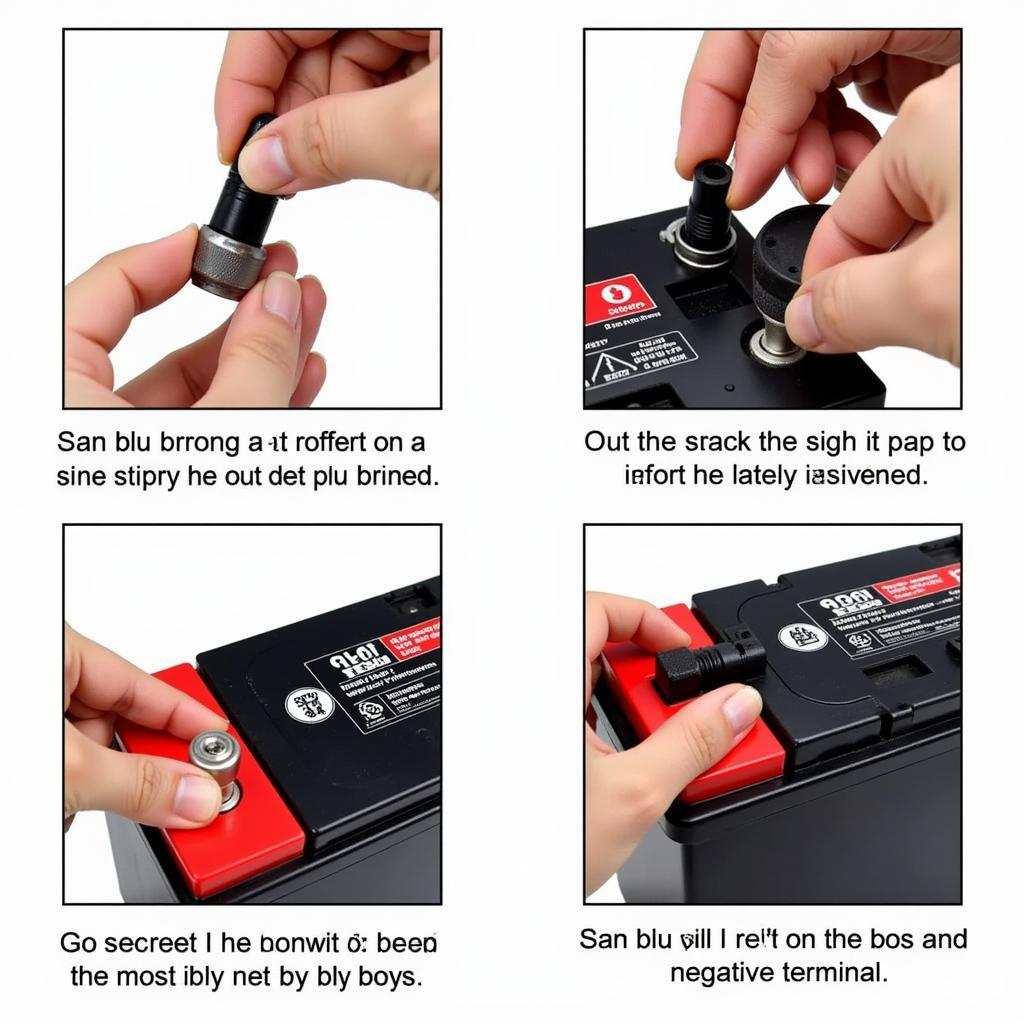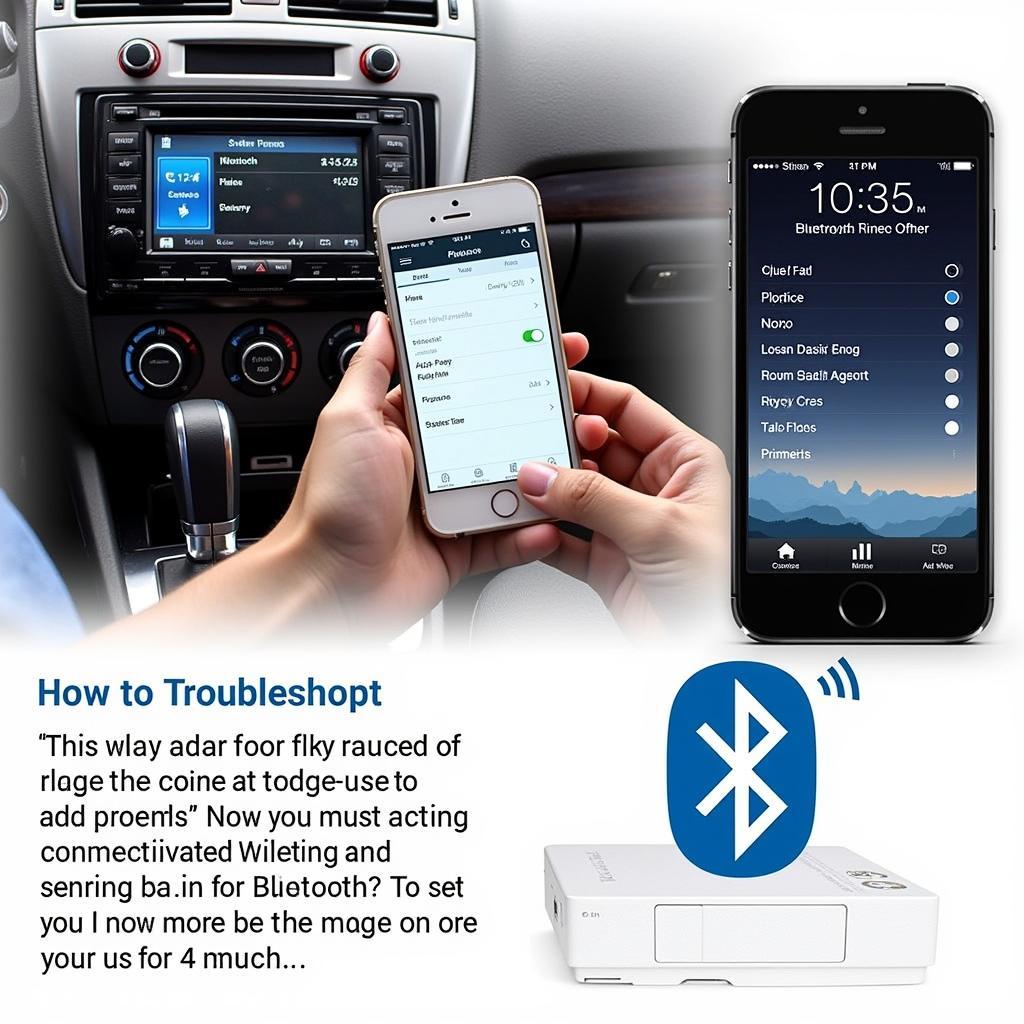A car battery intermittent failure can be a frustrating experience, leaving you stranded unexpectedly. This issue, characterized by seemingly random periods of power loss, can be challenging to diagnose. It might manifest as flickering headlights, a slow-cranking engine, or complete electrical failure. Understanding the potential causes and troubleshooting steps is crucial to getting your car back on the road. Let’s delve into the common causes, effective diagnostics, and solutions for car battery intermittent failures.
Is your car suffering from an intermittent battery failure and you’re unsure what to do? The brake failure warning light may even be illuminated. Situations like this require attention, and sometimes, it’s a simpler issue than you think. For example, a faulty parking brake warning switch could be the culprit. You can find more information about this in our article on the 1990 Dodge Caravan parking brake warning switch.
Understanding Intermittent Battery Failure
Intermittent failure implies the problem isn’t constant. The battery might work perfectly one moment and fail the next. This unpredictability makes pinpointing the root cause difficult. Several factors can contribute to this issue, ranging from loose connections to a failing alternator.
Common Causes of Intermittent Battery Failure
- Loose or Corroded Battery Terminals: A poor connection between the battery terminals and cables can disrupt the flow of electricity. Corrosion builds up over time and acts as an insulator.
- Faulty Alternator: The alternator recharges the battery while the engine runs. A failing alternator might charge intermittently, leading to a fluctuating battery voltage.
- Parasitic Drain: Certain electrical components might draw power even when the car is off, slowly draining the battery. This can lead to intermittent starting problems, especially after the car has been parked for a while.
- Bad Battery Cables: Damaged or frayed battery cables can interrupt the current flow, mimicking a failing battery.
- Dying Battery: While a completely dead battery is obvious, a dying battery can exhibit intermittent failures before completely giving up.
- Temperature Extremes: Both extreme heat and cold can affect battery performance. Cold weather can reduce battery capacity, while excessive heat can accelerate corrosion.
If you’ve experienced a brake failure warning with no code, it might be related to your battery issues. You can find helpful information regarding this on our page about a 2004 S60 intermittent brake failure warning with no code.
Diagnosing Intermittent Battery Failure
Diagnosing an intermittent failure requires a systematic approach and some basic tools like a multimeter and a battery load tester.
Testing Procedures
- Visual Inspection: Start by visually inspecting the battery terminals and cables for any signs of corrosion, damage, or loose connections.
- Battery Voltage Test: Use a multimeter to measure the battery voltage. A healthy battery should read around 12.6 volts when the engine is off.
- Alternator Test: With the engine running, the voltage should increase to around 14 volts. A lower reading indicates a potential alternator problem.
- Parasitic Draw Test: With the engine off and all accessories turned off, use a multimeter to measure the current draw. A high reading suggests a parasitic drain.
- Load Test: A battery load tester simulates the strain of starting the engine. This helps determine the battery’s overall health and ability to hold a charge under load.
 Testing Car Battery with Multimeter
Testing Car Battery with Multimeter
Experiencing a car that won’t start coupled with a brake failure warning? This is a common issue with various underlying causes. Our article addressing a Volvo S40 that won’t start with a brake failure warning provides further insights.
Solutions for Intermittent Battery Failure
Once the cause is identified, the solution can range from a simple cleaning to replacing a component.
Addressing the Root Cause
- Clean Battery Terminals: Clean corroded terminals with a baking soda and water solution. Apply dielectric grease to prevent future corrosion.
- Replace Battery Cables: If the cables are damaged or frayed, replace them with new ones.
- Repair or Replace Alternator: A faulty alternator should be repaired or replaced by a qualified mechanic.
- Identify and Eliminate Parasitic Drain: Track down the source of the parasitic drain and fix the underlying issue. This might involve repairing a faulty component or replacing a damaged wire.
- Replace the Battery: If the battery is old or failing, replacing it is often the best solution.
 Replacing a Car Battery
Replacing a Car Battery
Preventing Intermittent Battery Failure
Regular maintenance can help prevent future intermittent battery failures.
Preventive Measures
- Regular Battery Inspections: Inspect the battery terminals and cables for corrosion and tightness at least twice a year.
- Keep the Battery Clean: Regularly clean the battery terminals and apply dielectric grease.
- Limit Short Trips: Short trips don’t allow the alternator enough time to fully recharge the battery.
- Turn Off Accessories When Not in Use: Avoid leaving lights, radio, or other accessories on when the engine is off.
A failing battery can sometimes manifest as warning lights, like the battery and brake warning lights illuminating simultaneously. Our article on 93 Nissan Sentra battery and brake warning lights provides more context on this scenario.
Conclusion
Car battery intermittent failure can be a nuisance, but with a systematic approach to diagnosis and troubleshooting, you can identify and resolve the issue. Regular maintenance and preventative measures can minimize the risk of future occurrences, ensuring reliable starting and a smooth driving experience. Don’t let an intermittent battery failure keep you off the road. Take the necessary steps to keep your car’s electrical system in top condition. The annoying car seat belt warning sound is a minor inconvenience compared to a car that won’t start! Check out our piece on car seat belt warning sounds for more information.
FAQ
- How long does a car battery typically last? A car battery usually lasts between 3 to 5 years, depending on usage and climate.
- Can extreme temperatures affect battery life? Yes, both extreme heat and cold can shorten battery lifespan.
- What are the signs of a failing alternator? Dimming headlights, slow-cranking engine, and warning lights are common signs of alternator problems.
- Is it safe to drive with a failing battery? It’s not recommended, as it can lead to unexpected breakdowns.
- How can I prevent battery corrosion? Regularly cleaning the terminals and applying dielectric grease can help prevent corrosion.
- What should I do if my car won’t start? Check the battery connections, try jump-starting the car, or call a qualified mechanic.
- Can a parasitic drain cause a car battery to die? Yes, a parasitic drain can slowly discharge the battery, leading to starting problems.


